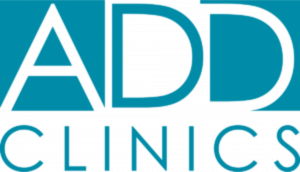ADD and ADHD: Clarifying the Diagnosis and Understanding the Brain-Based Differences
The Diagnostic and Statistical Manual of Mental Disorders (DSM-5), the current standard used by clinicians, recognizes only one official term: Attention-Deficit/Hyperactivity Disorder (ADHD). Within that diagnosis, however, there are multiple presentations. What was once known as Attention Deficit Disorder (ADD) is now categorized under ADHD, predominantly inattentive presentation.
Dr. Stanford Owen, founder of ADD Clinics in Gulfport, Mississippi, emphasizes that clarity in terminology helps reduce misunderstanding and leads to more accurate treatment plans.
“ADD is not a separate disorder,” said Dr. Owen. “It’s a commonly used term to describe one subset of ADHD that presents without hyperactivity. But whether the symptoms include restlessness or appear more internally distracted, the underlying neurological patterns are rooted in the same brain-based mechanisms.”
ADHD is classified into three primary presentations:
Predominantly Inattentive Presentation: Often labeled as ADD in casual usage, this includes symptoms like forgetfulness, distractibility, disorganization, and difficulty sustaining focus. Hyperactivity is not a prominent feature.
Predominantly Hyperactive-Impulsive Presentation: Characterized by fidgeting, impulsive speech or actions, restlessness, and difficulty remaining seated or still.
Combined Presentation: Features a mixture of inattentive and hyperactive-impulsive symptoms.
These distinctions matter not just for diagnostic precision but for understanding how the condition affects daily life. Someone with predominantly inattentive symptoms may be misjudged as lazy, disinterested, or lacking motivation, especially if hyperactivity is not outwardly visible. Conversely, individuals with prominent hyperactivity may receive earlier intervention due to more noticeable behavioral challenges.
In both cases, the condition originates in the brain’s executive function system—specifically within networks that regulate attention, task management, working memory, and impulse control. Neuroimaging studies have shown structural and functional differences in the prefrontal cortex and dopamine signaling pathways among individuals with ADHD. These differences impact how attention is initiated, sustained, and shifted, as well as how rewards and consequences influence behavior.
The effects of ADHD—regardless of presentation—can extend into school, work, relationships, and mental health. Common secondary struggles include chronic procrastination, anxiety, depression, and low self-esteem, particularly when symptoms remain undiagnosed or misunderstood.
In recent years, increased adult diagnoses have highlighted the persistent nature of ADHD beyond childhood. Many adults who were labeled as “dreamy” or “unmotivated” in school environments are now discovering that their lifelong difficulties with organization, follow-through, and mental focus are consistent with inattentive-type ADHD. Recognition of these patterns often brings a sense of relief and validation, as it reframes personal struggles within a medical and neurological context rather than a moral or character flaw.
Dr. Owen explains that understanding the subtype is important for treatment decisions. Medication responses, behavioral strategies, and lifestyle adjustments can vary depending on the individual’s symptom profile.
Treatment typically involves a combination of pharmacological and non-pharmacological interventions. Stimulant medications, such as methylphenidate and amphetamines, are commonly prescribed to enhance dopamine signaling and improve focus. For some, non-stimulant options may be more appropriate, particularly in cases of coexisting conditions like anxiety or sleep disorders.
Behavioral coaching, environmental modifications, and structured planning tools support long-term success. Techniques that externalize executive function—such as using alarms, visual reminders, and checklists—are often more effective than strategies that rely on willpower alone.
Sleep hygiene, nutritional support, and movement-based routines can also affect cognitive clarity. In individuals with inattentive ADHD, even minor shifts in schedule or environment may significantly impact functioning.
Accurate diagnosis remains the foundation for all of these efforts. While terms like ADD persist in public use, modern clinical frameworks now recognize that attention deficits with or without hyperactivity belong under the ADHD umbrella. Identifying the specific presentation helps differentiate between symptoms of distraction versus symptoms of overstimulation and physical restlessness—each of which requires a tailored response.
ADD Clinics, based in Gulfport, Mississippi, continues to assess, diagnose, and treat individuals across a range of ADHD presentations. With a focus on comprehensive evaluation and neurological understanding, the clinic works to ensure that each patient’s experience is reflected accurately in their diagnosis and management plan.
Morgan Thomas
Rhino Digital, LLC
+1 504-875-5036
email us here
Visit us on social media:
Facebook
Legal Disclaimer:
EIN Presswire provides this news content "as is" without warranty of any kind. We do not accept any responsibility or liability for the accuracy, content, images, videos, licenses, completeness, legality, or reliability of the information contained in this article. If you have any complaints or copyright issues related to this article, kindly contact the author above.
At 7.3% CAGR Helicopters Market Estimated to Reach $39.87 Billion by 2031
Unveiling Excellence: Top-Tier Bath Tap Extension Hose Factories Shone Bright in Beijing at ISH China & CIHE
Regenerative Medicine Market to Reach Over USD 403.86 Billion by 2032 with Breakthrough Investments | DataM Intelligence
Więcej ważnych informacji
 Jedynka Newserii
Jedynka Newserii

 Jedynka Newserii
Jedynka Newserii

Problemy społeczne

Ślązacy wciąż nie są uznani za mniejszość etniczną. Temat języka śląskiego wraca do debaty publicznej i prac parlamentarnych
W Polsce 600 tys. osób deklaruje narodowość śląską, a 460 tys. mówi po śląsku. Kwestia uznania etnolektu śląskiego za język regionalny od lat wzbudza żywe dyskusje. Zwolennicy zmiany statusu języka śląskiego najbliżej celu byli w 2024 roku, ale nowelizację ustawy o mniejszościach narodowych i etnicznych zablokowało prezydenckie weto. Ostatnio problem wybrzmiał podczas debaty w Parlamencie Europejskim, ale zdaniem Łukasza Kohuta z PO na forum UE również trudna jest walka o prawa mniejszości etnicznych i językowych.
Transport
Polacy z niejednoznacznymi opiniami na temat autonomicznych pojazdów. Wiedzą o korzyściach, ale zgłaszają też obawy

Polacy widzą w pojazdach autonomicznych szansę na poprawę bezpieczeństwa na drogach i zwiększenie mobilności osób starszych czy z niepełnosprawnościami. Jednocześnie rozwojowi technologii AV towarzyszą obawy, m.in. o utratę kontroli nad pojazdem czy o większą awaryjność niż w przypadku tradycyjnych aut – wynika z prowadzonych przez Łukasiewicz – PIMOT badań na temat akceptacji społecznej dla AV. Te obawy wskazują, że rozwojowi technologii powinna także towarzyszyć edukacja, zarówno kierowców, jak i pasażerów. Eksperci mówią także o konieczności transparentnego informowania o możliwościach i ograniczeniach AV.
Prawo
70 proc. Polaków planuje wyjazd na urlop w sezonie letnim 2025. Do łask wracają wakacje last minute

Ponad 70 proc. Polaków planuje wyjechać na urlop w sezonie letnim, czyli między końcem czerwca a końcem września – wynika z badania Polskiej Organizacji Turystycznej. 35 proc. zamierza wyjechać tylko raz, a 30 proc. – co najmniej dwa razy. Z grupy wyjeżdżających jedna trzecia wybierze się na wyjazd zagraniczny. Jak wskazuje Katarzyna Turosieńska z Polskiej Izby Turystyki, po kilku latach ponownie do łask wracają oferty last minute, a zagraniczne kierunki pozostają niezmienne – prym wiodą m.in. Grecja, Tunezja, Egipt czy Hiszpania.
Partner serwisu
Szkolenia

Akademia Newserii
Akademia Newserii to projekt, w ramach którego najlepsi polscy dziennikarze biznesowi, giełdowi oraz lifestylowi, a także szkoleniowcy z wieloletnim doświadczeniem dzielą się swoją wiedzą nt. pracy z mediami.



![Nestlé w Polsce podsumowuje wpływ na krajową gospodarkę. Firma wygenerowała 0,6 proc. polskiego PKB [DEPESZA]](https://www.newseria.pl/files/1097841585/fabryka-nesquik_1,w_85,r_png,_small.png)






.gif)

 |
| |
| |
|